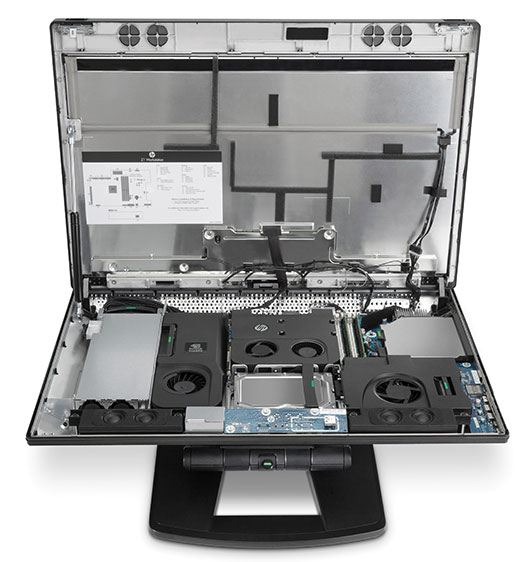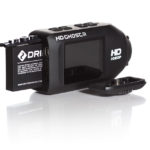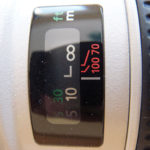
Review: HP Z1 Workstation
Posted on Mar 15, 2013 by Alex Fice
The HP Z1 workstation was excellent for a single CPU machine.
Unless you’re using ‘Smoke For Mac’ is there any reason to keep loyal to the Californian badge anymore? HP reckon there isn’t and are aiming their mid-level workstation, the Z1, directly at the old Mac Pro market. We review a post production specced model and find an ingeniously designed all-in-one package. By ADAM GARSTONE
The HP Z1 is heavy. Really heavy. I mean don’t-lift-it-out-of-the-box-on-your-own-without-good-medical-insurance heavy. The Mac started the All-In-One paradigm, and the latest 27in iMac weighs about 9.5kg. The 27in Z1 weighs around 21kg. Ouch!
It’s not fair to compare the Z1 to the iMac though – they are very different beasts. The Z1, although it’s an All-In-One design, is actually a mid-level workstation, sandwiched with a monitor and mounted on a detachable, folding stand. The stand allows the Z1 to fold down onto its back – flip a couple of latches and the screen lifts up on a gas strut, revealing the innards of the computer. The review unit was fitted with a Xeon E3-1245 processor (four cores at 3.3GHz with 8M cache), maxed out with 32GB of DDR3 memory and with a single 1TB, 6Gb/s SATA hard disc drive. This is the unit that HP are targeting at post-production, so it was fitted with an MXM NVIDIA Quadro 4000M graphics card with 2GB of on-board memory. The internal layout of the machine is very smart indeed – it’s very easy to change memory, discs and graphics. One feature I really liked was the inclusion of an internal USB2 connector, so you can use it to hide a software dongle inside the machine. There is only a single hard disc bay, though you could fit two 2.5in discs here, rather than the single 3.5in. This means you can RAID together a couple of Solid State Discs for much increased performance. There are three mini PCIe slots, one of which is taken up by the WiFi/Bluetooth module. There are several fans in the unit – in normal operation they are audible but not intrusive.
‘Put simply, I don’t know of any other all-in-one computer that has the performance of the Z1’
Once the Z1 is raised into working position on its stand (which isn’t entirely straightforward, given the weight of the thing), there is an equally impressive array of external ports. The right hand side has the optical drive (DVD with Blu-ray as an option), a “4-in-1” media card (SD) reader, Firewire 1394a, two USB 3.0 ports and audio I/O. There is a 1080p webcam, mic and speakers on the front (as well as, obviously, the monitor – more on that later). The rear features the mains inlet, more audio I/O (including a line-level sub-woofer output and S/PDIF), four USB 2.0 ports, DisplayPort I/O and an RJ-45 for gigbit ethernet. For some reason, HP chose to position all these rear connectors directly in front of the stand, so they are tricky to get at. In fact, the IEC mains cable has to bend to get around the stand as it exits the chassis. Life would have been much easier if they had just offset this panel to one side.
 The Z1 innards are unveiled after a couple of latches are undone. Gas struts keep the lid up.
The Z1 innards are unveiled after a couple of latches are undone. Gas struts keep the lid up.
The built-in monitor is a 27in, 2560×1440 IPS LCD with LED backlighting and 10 bit colour support. The review unit had a little bunch of dead pixels and a tiny curl of swarf trapped under the glass. Either of these would be covered by HP’s excellent three year, next working day, on-site warrantee, and shouldn’t be considered typical faults – review units get shipped from journalist to journalist so it’s not surprising that they show unusual wear and tear. The screen has a very shiny finish (in the latest vogue) which certainly helps image quality, provided you can control reflections appropriately. In a typical edit, or graphics suite this wouldn’t be a problem. It does, however, highlight an issue with buying an all-in-one solution – you can’t choose exactly the monitor you want to fit your needs.
HP will supply computers with Windows 7 Professional (32 or 64 bit), or Linux pre-installed. Ours had Windows and a refreshing lack of bloatware. There were a few oddities – a TI driver felt the need to re-install itself every time the computer was booted up – but overall the impression was of a fast, stable system.
HP, NVIDIA and Adobe have a tie-up, so I installed Premiere Pro, After Effects, Speedgrade and Photoshop. NVIDIA’s Quadro 4000M is a great graphics card for video users – very fast for the price and with a good amount of support from third party software vendors. Premiere Pro will use the card for effects, like the Warp Stabilizer and colour corrector. Indeed, all four packages will use the GPU to some extent, and performance on the Z1 was excellent for a single CPU machine, as it was with both Avid Media Composer 6.5 and Lightworks 11, both of which are also GPU optimised for various effects playback. Put simply, I don’t know of any other all-in-one computer that has the performance of the Z1.
Time was that post-production had to have huge, floor standing workstation computers. The principal requirement was for plug-in interface cards, but the new generation of high speed interfaces removes that limitation. USB 3 interfaces, like Blackmagic’s Ultrastudio Pro, provide HD-SDI, HDMI, four channels of analog audio I/O, genlock, deck control and so on, so the Z1 would fit well in a small, stand-alone edit or graphics suite. Sadly, I don’t know of any mini-PCIe Fibre Channel cards, or USB 3 to Fibre Channel converters, so SAN connectivity, in a larger facility, will be a problem.
The list price for the Z1 we tested is £4250, and that’s not cheap. By comparison, that’s about the same price as a similarly specced Dell Precision T5600 workstation (with a better, E5-2643 CPU) and a professional 27in display. Of course, the Dell would give you PCIe slots, more hard drive bays and so on. For a similar price you can buy a similarly spec’ed Z620 with dual Intel Xeon E5-2620 processors, or a Z820 with a single Xeon E5-2643 processor. These are also more expandable than the Dell 5600.
So, if you want the convenience, style and space-saving of the all-in-one form factor, the HP Z1 is pretty hard to fault. You pay a slight premium for this convenience, but the Z1 has all the performance you need for serious post-production work.

















